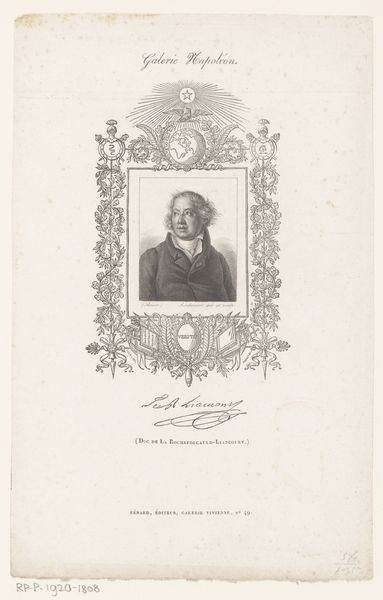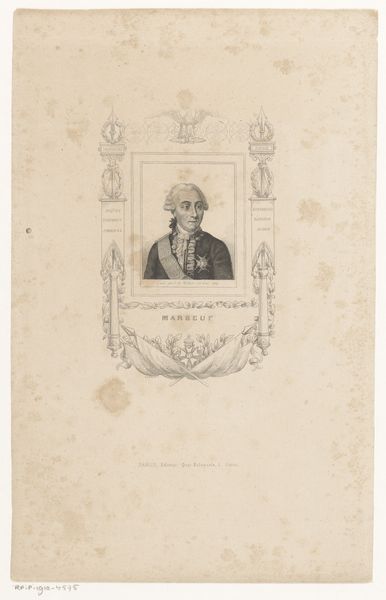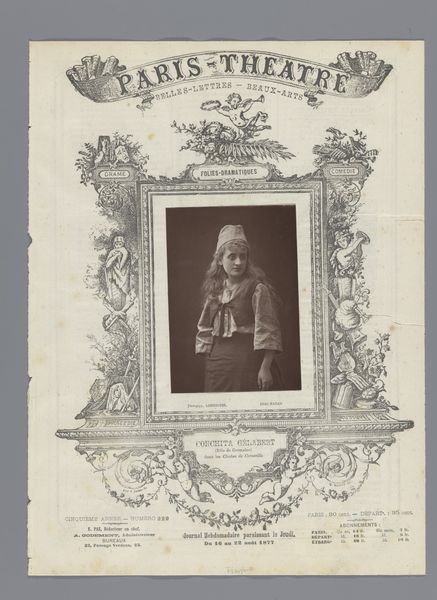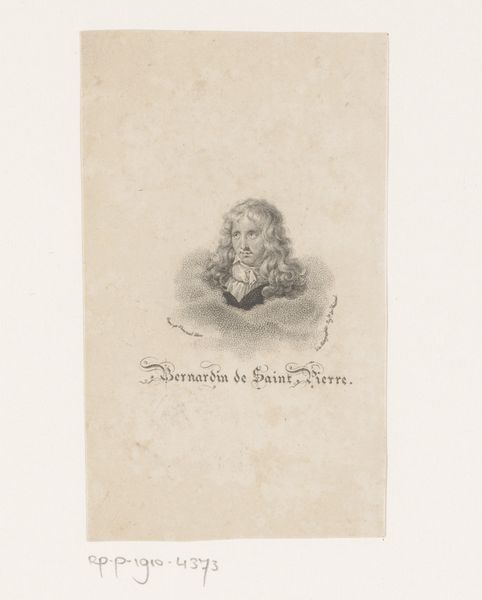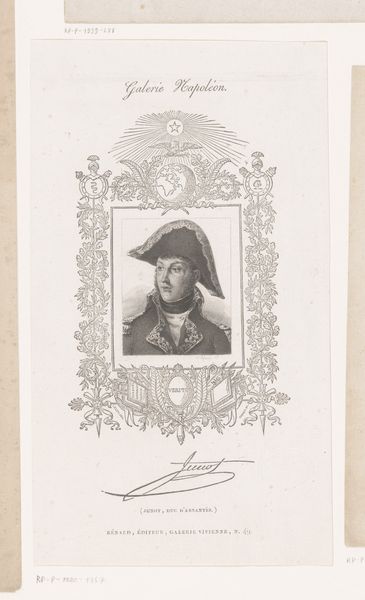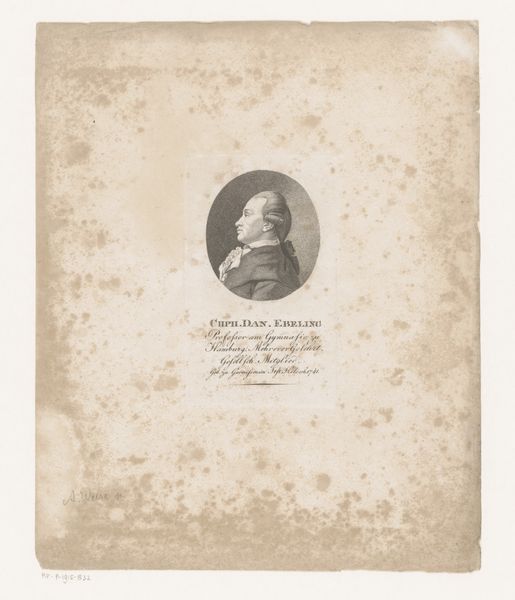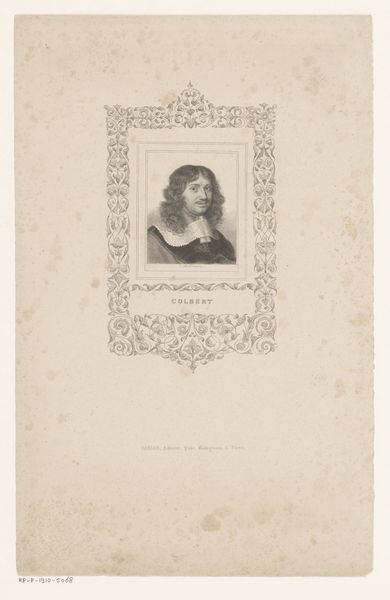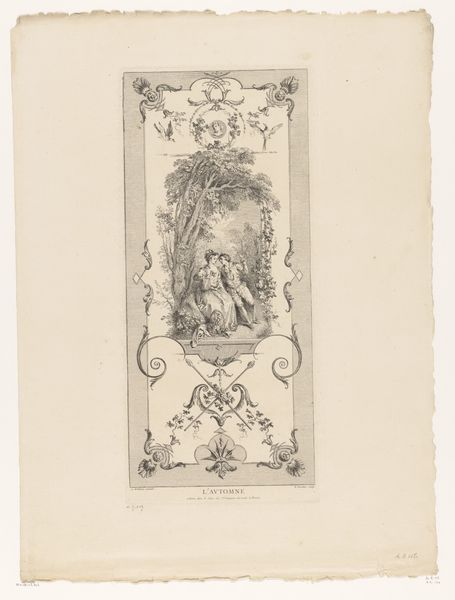
print, engraving
# print
#
academic-art
#
engraving
Dimensions: height 197 mm, width 124 mm
Copyright: Rijks Museum: Open Domain
Editor: This is "Portret van Jean-Baptiste Kléber", an engraving made sometime between 1829 and 1830 by Jean-Mathias Fontaine. I am really intrigued by the intricacy of the lines; they appear very delicate. What do you make of this work? Curator: The engraving, with its lines etched into the metal plate, speaks volumes about the industrial means of its production. This isn't a unique creation but part of a wider process of image dissemination within 19th-century France. Notice the 'Galerie Napoléon' inscription. It suggests a calculated mass appeal – can you consider this print within a system of consumer culture, even propaganda? Editor: I didn’t consider that angle initially. I was focusing on the person depicted, but what you say makes me reconsider. It's a portrait, yet almost like a commodity because of the 'Galerie Napoléon' association, right? Curator: Precisely! Think about the labor involved: the engraver translating an image for mass production, the publisher disseminating it. Academic art like this wasn’t just about aesthetics; it served as a mechanism for constructing historical narratives. It promoted certain individuals or ideas to cement the social status quo. Consider what values it upholds and who benefits from that narrative? Editor: So, the materials and production tell us about the print’s role in society, not just about Fontaine’s skill as an engraver. The engraving isn’t simply about academic artistic expression, it also is an article of consumption that participates in circulating an idea. That is thought-provoking. Curator: Exactly! And the more we examine those material processes, the better we understand the social dynamics behind this so-called Academic style. Editor: I'll never look at an engraving the same way again. I was too focused on aesthetics without truly digging beneath the surface to find what it reveals about the labor and systems in play. Thank you for broadening my perspective.
Comments
No comments
Be the first to comment and join the conversation on the ultimate creative platform.



